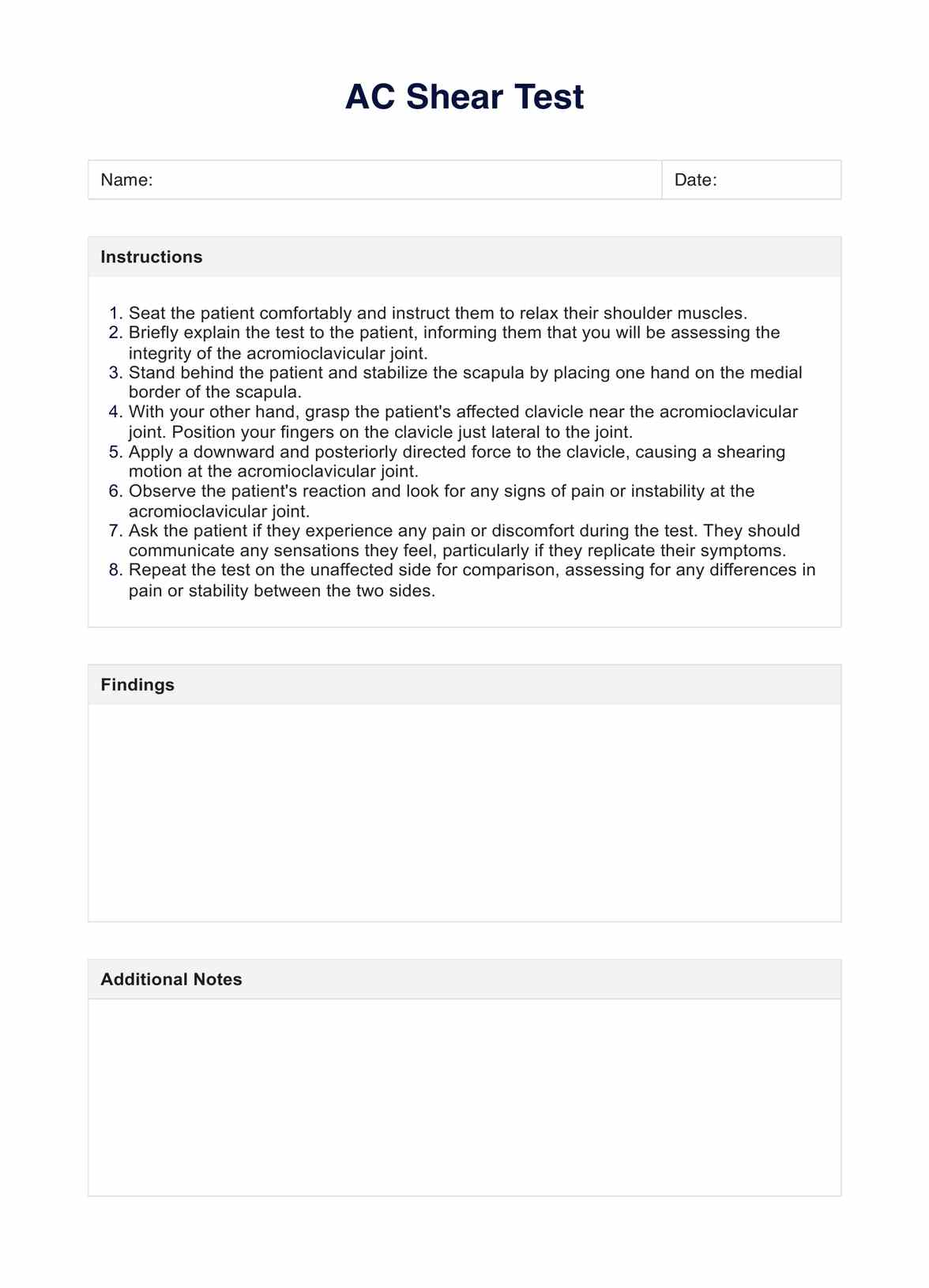Yes, the AC Shear Test, like any diagnostic procedure, has a certain margin for error, and it is possible to encounter both false positives and false negatives. Factors that influence these discrepancies include the examiner's technique, the patient's response to pain, and the inherent limitations of the test itself. Supplementing this test with additional diagnostic tools and clinical assessments is crucial to ensure an accurate diagnosis.

AC Shear Test
Get access to a free AC Shear Test. Learn how to perform this assessment and record findings using our PDF template.
AC Shear Test Template
Commonly asked questions
The AC Shear Test can be particularly valuable for diagnosing isolated chronic acromioclavicular lesions, as it directly assesses the integrity of the AC joint by applying pressure to isolate this specific joint. However, the diagnostic value of this test increases when used alongside other evaluations since it can sometimes miss subtle chronic conditions or when the pathology involves surrounding structures.
The diagnostic value of the AC Shear Test lies in its ability to quickly screen for AC joint pathology through a simple and non-invasive procedure. While it is an effective initial assessment tool, its definitive diagnostic value is best achieved when combined with a comprehensive clinical examination, patient history, and potentially further imaging studies to confirm the extent and specifics of the injury or lesion.
EHR and practice management software
Get started for free
*No credit card required
Free
$0/usd
Unlimited clients
Telehealth
1GB of storage
Client portal text
Automated billing and online payments











